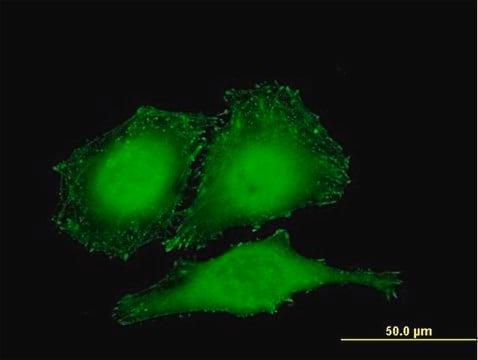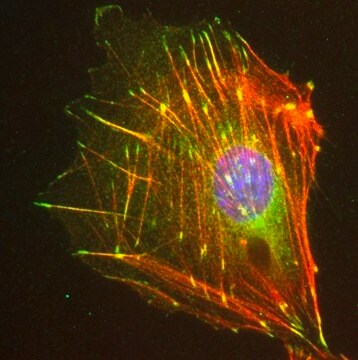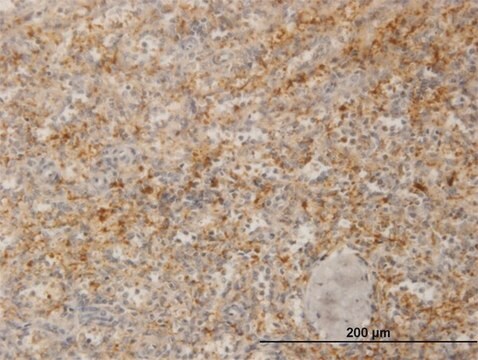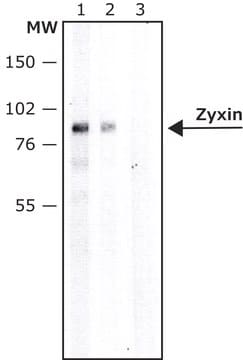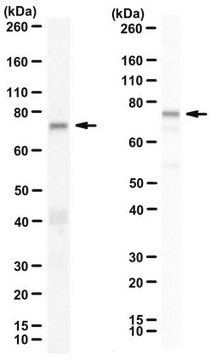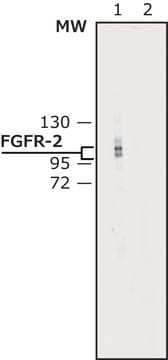MAB2610
Anti-Zyxin Antibody, clone 14E11.1
clone 14E11.1, from mouse
Synonym(s):
Zyxin2, Zyxin, Zyxin-2
About This Item
Recommended Products
biological source
mouse
Quality Level
antibody form
purified immunoglobulin
antibody product type
primary antibodies
clone
14E11.1, monoclonal
species reactivity
human, mouse, rat
technique(s)
immunocytochemistry: suitable
western blot: suitable
isotype
IgMκ
NCBI accession no.
UniProt accession no.
shipped in
wet ice
target post-translational modification
unmodified
Gene Information
mouse ... Zyx(22793)
General description
Immunogen
Application
Cell Structure
Cytoskeletal Signaling
Quality
Western Blot Analysis: 0.5 µg/mL of this antibody detected Zyxin in 10 µg of HUVEC cell lysate.
Target description
The calculated molecular weight is 61 kDa Zyxin is a phosphoprotein with an apparent molecular weight of 82–84 kDa (van der Gaag, E., et al. (2002). Journal of Investigative Dermatology. 118:246–254.). As a substrate of caspases, Zyxin can be cleaved as 30, 37, 48 and 70 kDa (C-B Chan, C-B., et al. (2007). Cell Death and Differentiation. 14:1688–1699.)
Physical form
Storage and Stability
Analysis Note
HUVEC cell lysate
Other Notes
Disclaimer
Not finding the right product?
Try our Product Selector Tool.
recommended
Storage Class Code
12 - Non Combustible Liquids
WGK
WGK 2
Flash Point(F)
Not applicable
Flash Point(C)
Not applicable
Certificates of Analysis (COA)
Search for Certificates of Analysis (COA) by entering the products Lot/Batch Number. Lot and Batch Numbers can be found on a product’s label following the words ‘Lot’ or ‘Batch’.
Already Own This Product?
Find documentation for the products that you have recently purchased in the Document Library.
Our team of scientists has experience in all areas of research including Life Science, Material Science, Chemical Synthesis, Chromatography, Analytical and many others.
Contact Technical Service
